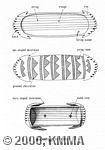

Among the Kiga:
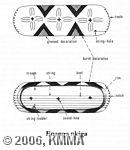
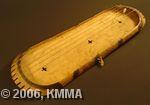

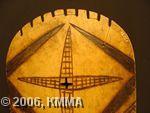

Among the Kunta:
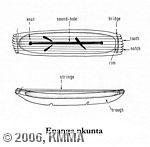



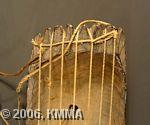
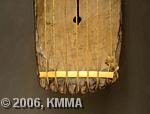
Among the Ziba:


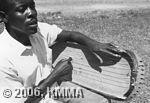
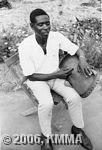
The enanga is a trough zither that is used by four groups in Ankole: the Kiga, Hima, Kunta and the Ziba. Even though the design and function of the enanga are different in each of these four groups, they can all be called enanga.
Among the Hima:


Among the Kiga:





Among the Kunta:






Among the Ziba:

The overall shape of a trough zither is characterized by a flat soundboard with slightly concave sides reminiscent of the shape of a trough. At the narrow ends the zither has V-shaped notches that hold the string in place and stop it from going out of tune. Among the Kiga and the Hima the zither always has more notches than there are strings. It is in fact just one long string that is looped around the instrument thus creating several playable strings. The string may be made of vegetable or animal material, fibres or cow sinew.
Except among the Kunta, the ends of the string are wound around a wooden peg. The bottom of the soundboard usually has three or four sound holes to improve the sound. Cracks in the zither are repaired by tying them together with fibre or by nailing a piece of tin over it. The underneath of the soundboard is often decorated with engraved and pyrographed designs.
The player does not use all of the string when he plays and never plays chords; a short melodic pattern is simply repeated. The enanga is tuned by tightening or loosening the string and this often means that a number of segments need to be adjusted to a new pitch. The player can also change a note while playing by pressing the end of the string lightly, which produces a higher note.
The player remains seated as he plays and rests the zither on his lap. He holds the enanga with the little finger of his left hand and plucks the top strings with the other fingers of his left hand. With his right hand he plucks the strings that produce the lowest notes. The style is personal and varies from player to player. Good players develop their own style of playing and singing. The content of the songs can vary greatly.
| Population group | Kiga | Hima | Kunta | Ziba |
|---|---|---|---|---|
| Name enanga | enanga nkiga | enanga mpima | enanga nkunta | nnanga nziba |
| Length | 40-90 cm | 65-100 cm | 45-55 cm | |
| Width | 18-25 cm | 20-25 cm | 10-13 cm | |
| Depth | <10 cm | 10 cm | Depends on the size of the instrument | |
| Sound holes | 3-4, Shape: + or - |
Sometimes | Yes, with a strap for carrying | Several round ones at the ends and one in the middle |
| Notches | up to 13 | 12, sometimes more | 7 | 7 |
| Strings | 6 | 7 | 7 | 7 |
| External resonator | / | Previously a wooden water pot, now a metal wash basin | / | A gourd, usually fixed to the instrument |
| Shape of soundboard | An oval trough, the soundboard is also the bridge for the strings | Oval, with four protruding corners | Boat-shaped, the edge of the soundboard cannot function as a bridge and a reed is therefore placed under the strings. |
|
| Decoration on top | Wide pyrographed bands | / | ||
| Decoration underneath |
|
Triangular and rectangular patterns in bas-relief and haut-relief | ||
| The instrument plays | short melodic patterns | in accompaniment to the singing | in accompaniment to the singing | in accompaniment to the singing |
| Special features of the singing |
|
|
||
| Player | Men, sometimes women | Women | Men | Men |
| Playing | solo, sometimes accompanied by clapping | solo | solo | solo |
| Function | Relaxation | Eulogic | Relaxation | Relaxation |
| Comments | No longer used, now replaced by the nkiga type | String tied to notches | Rare, now replaced by the nkiga type |
for more information see also: VAN THIEL, Paul, "Multi-Tribal Music of Ankole. An ethnomusicological study including a glossary of musical terms." Edited by the Royal Museum for Central Africa, Annales, Sciences Humaines, nr 91, 1977, 234 pp.
© KMMA/Paul VAN THIEL